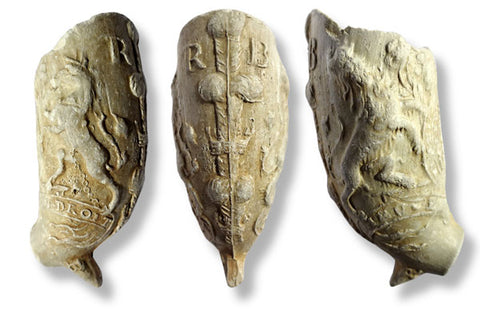Clay smoking pipes, frequently discovered along the foreshore of the Thames River, offer a unique glimpse into London’s evolving social and economic landscape. These delicate artifacts, preserved by the river’s protective mud, tell the story of how tobacco consumption shifted from an exclusive luxury to a widespread habit over the course of several centuries.
The Transformation of Tobacco Consumption
In the late 16th century, tobacco was a luxury item, primarily consumed by the wealthiest Londoners. The small, fragile clay pipes of the time reflected this exclusivity, with their tiny bowls used to consume the limited and expensive tobacco that was imported into the city. However, as trade routes expanded and tobacco production increased, the price of tobacco fell. By the 17th and 18th centuries, the larger size of clay pipe bowls indicated the democratization of smoking, as tobacco became affordable for the broader population.

These pipes were often pre-filled with tobacco and sold for single use, discarded after smoking. This widespread habit, particularly among workers and tradespeople in the busy port areas, left behind thousands of pipes along the Thames foreshore, serving as a lasting record of London’s bustling economy and the changing habits of its people.
Decorative Designs and National Pride
By the 18th century, the design of clay pipes began to evolve, with manufacturers incorporating intricate decorative elements. Pipes from the 1730-1770 period, for example, often featured the Royal Coat of Arms, depicting the English lion and Scottish unicorn. These symbols of national pride reflect the growing cultural significance of smoking, transitioning from a personal indulgence to a social practice intertwined with royal identity and national unity.

Archaeological Significance
The continuing discovery of clay pipes along the Thames provides archaeologists with valuable insights into London’s past. The sheer volume of pipes found near the city’s ports highlights how integral tobacco was to the daily lives of Londoners across all social classes. These finds also reveal the global scope of London’s trade, with tobacco flowing in from the American colonies, shaping not only the city’s economy but also its social practices.

Conclusion: A Reflection of London’s Social Evolution
The legacy of clay smoking pipes on the Thames foreshore serves as a powerful reminder of the transformation of London’s social landscape. From a symbol of wealth to a common commodity, the evolution of tobacco use in the city mirrors broader shifts in its economy and culture. These fragile artifacts are not just relics of a past habit—they are key pieces of evidence, shedding light on the everyday lives of Londoners and the ways in which global trade, social norms, and national identity intersected in the heart of one of the world’s most dynamic cities.

